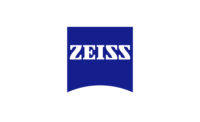During a recent ASQ Inspection Division meeting, I had the opportunity to sit down over lunch with some of the very best minds in the quality field. After exchanging pleasantries, I was quickly engaged in an insightful discussion about corrective actions. My colleagues discussed a problem I understood well: Corrective actions assigned to trends can lead to superficial or ineffective solutions. A member of the table chimed in that it all relates to the old analogy: You cannot see the forest for the trees. It can be in our best interest as inspectors then to seek the expertise of outside evaluators for that all-important outside perspective.
An example of this issue—and one my team and I address regularly—relates to documentation validation. Many Air Force calibration laboratories have processes in place to verify documentation accuracy before returning the calibrated equipment back to the customer. Numerous laboratories have identified flaws in the verification process, usually through the internal quality program. A common corrective action implemented for this issue—and determined through trend analysis meetings—is to add processes for an additional documentation verification. The common outcome of this action is to simply add unbudgeted costs to an already minimally manned laboratory without additional value.
To prevent this type of error, it is essential to accurately assess the nonconforming condition and identify the true root cause of the nonconformity. It is common for poor corrective actions to be implemented due to poor identification of root causes. If the trend is based on superficial—or secondary—causes, then the corrective actions run the risk of providing a Band-Aid approach, or hiding the errors, without correcting the problem.
The other common error, which seems to be occurring more often recently, deals with the selection of corrective actions. If your corrective action includes an additional step or process, there is potential for additional errors. While some corrective actions require additional steps, such as errors caused by processes outside the control of the performing activity, the added time and cost should be considered. Adding processes typically goes against lean principles and often does not add value to the product.
Another concern with adding processes is that this action can shift, or remove, responsibility. Human nature becomes a concern. In the example above, the cause lies with the certifying technician because the technician is responsible for completing the documents (or validating the documents if they are auto-generated). By adding the additional layer of validation, the certifying technician may not take the additional time to review the documentation because he or she is aware that there will be a secondary review before being released to the quality program or customer. Likewise, the secondary reviewer only gives the documentation a cursory review because the technician has a good track record and it is felt that he or she does not require micro-management. Unfortunately, this situation plays out time and time again.
These issues are not new concerns within the quality community. However, these errors continue to plague programs, even programs with experienced quality professionals. The problems arise because the quality personnel are close to the day-to-day processes. To overcome this issue, it becomes essential to separate oneself when analyzing data. When drilling down for root causes, review other processes, or departments, early in the value stream for interactions. Then, determine the following: Could processes prior to the one being analyzed contribute to the nonconforming condition? If the answer is no, then it is reasonable to assume the root cause lies within the process being reviewed. When analyzing corrective actions, it is important to ask the question “Are we fixing the problem or fixing the cause?” Adding a secondary review of documents fixes the problem of incorrect documents making their way to the customer. But this does little, if anything, toward fixing the cause of the nonconforming documents. The part that the corrective action does not address is why the errors were being made in the first place. The answer to that question corrects the root cause.
This sounds simple, and it often is. Separating the inspector from the process and preconceived notions can improve your corrective action process. For internal quality personnel, is it important for the inspector to use systematic processes to analyze root causes when determining effective corrective actions. This allows the inspector to focus on the forest.



